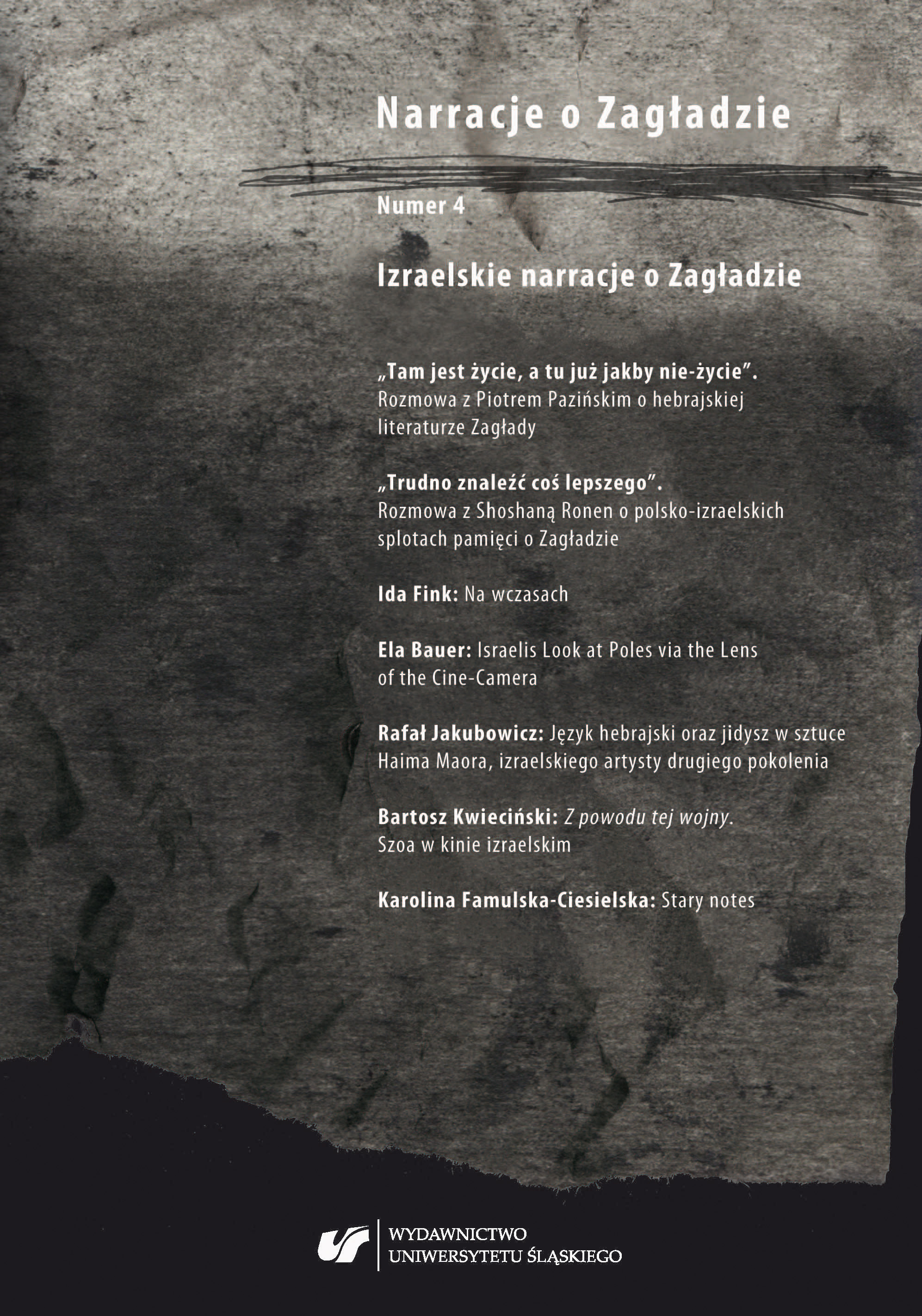Język hebrajski oraz jidysz w sztuce Haima Maora, izraelskiego artysty drugiego pokolenia
Hebrew and Yiddish in Works by Haim Maor, an Israeli Artist of the Second Generation
Author(s): Rafał JakubowiczSubject(s): Language studies, Language and Literature Studies, Philology, Theory of Literature
Published by: Wydawnictwo Uniwersytetu Śląskiego
Keywords: Haim Maor; Second Generation; new historians; camp prisoner number; postmemory; post‑Zionism
Summary/Abstract: An Israeli artist of the Second Generation or the postgeneration, Haim Maor uses in his art. various means of expression, such as painting, installation, photography, or performance, and creates biographical art. In numerous works, he uses words or texts in Hebrew, Yiddish, English, German, Polish, and Arabic. In this article, the author focuses mainly on these works of art in which Haim Maor – in a way close to conceptualism, postconceptualism, and concrete poetry – uses words, especially those in Hebrew and Yiddish. The author refers to the presence of tension in this art between the official language of the young and proud country of Israel (Hebrew) and the language of diaspora, despised by Israeli elites (Yiddish). Works by Maor evoke the Shoah mainly by means of references to familial stories. In the article, the author tackles the motif of memory found in this art, putting it in the context of post‑ Holocaust art and the notion of postmemory (Marianne Hirsch), and showing the way in which the attitude towards the tragedy of the Shoah transformed in Israel. Maor’s art criticises the myths functioning in Israeli society, such as the myth of “beautiful” death. Using not only the research of Israeli Zionist historians (Anita Shapira) and so‑ called new historians (Shlomo Sand, Tom Segev, Ilan Pappé, Idith Zertal) but also the texts of left‑wing publicists and writers (David Grossman, Amos Oz, Ari Shavit), the author attempts to depict the way in which art works through the same problems which historians, writers, and journalists face.
Journal: Narracje o Zagładzie
- Issue Year: 2018
- Issue No: 4
- Page Range: 163-233
- Page Count: 71
- Language: Polish

